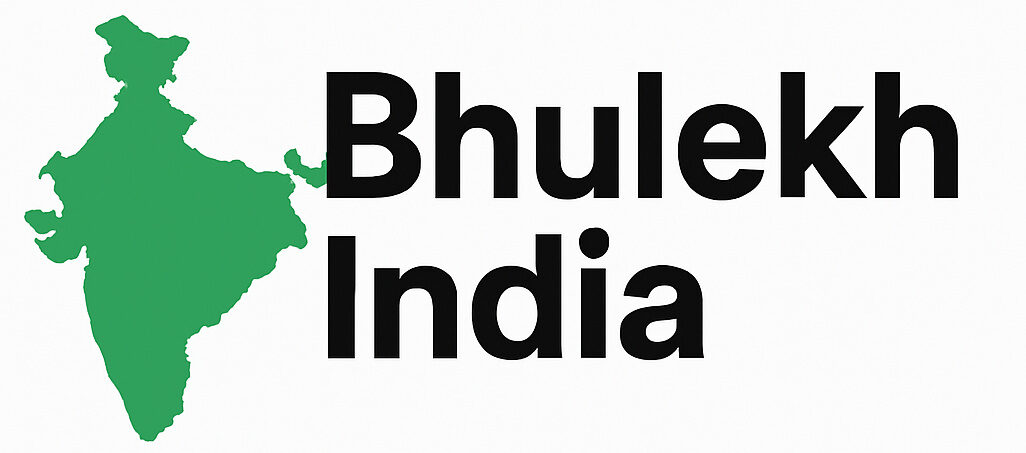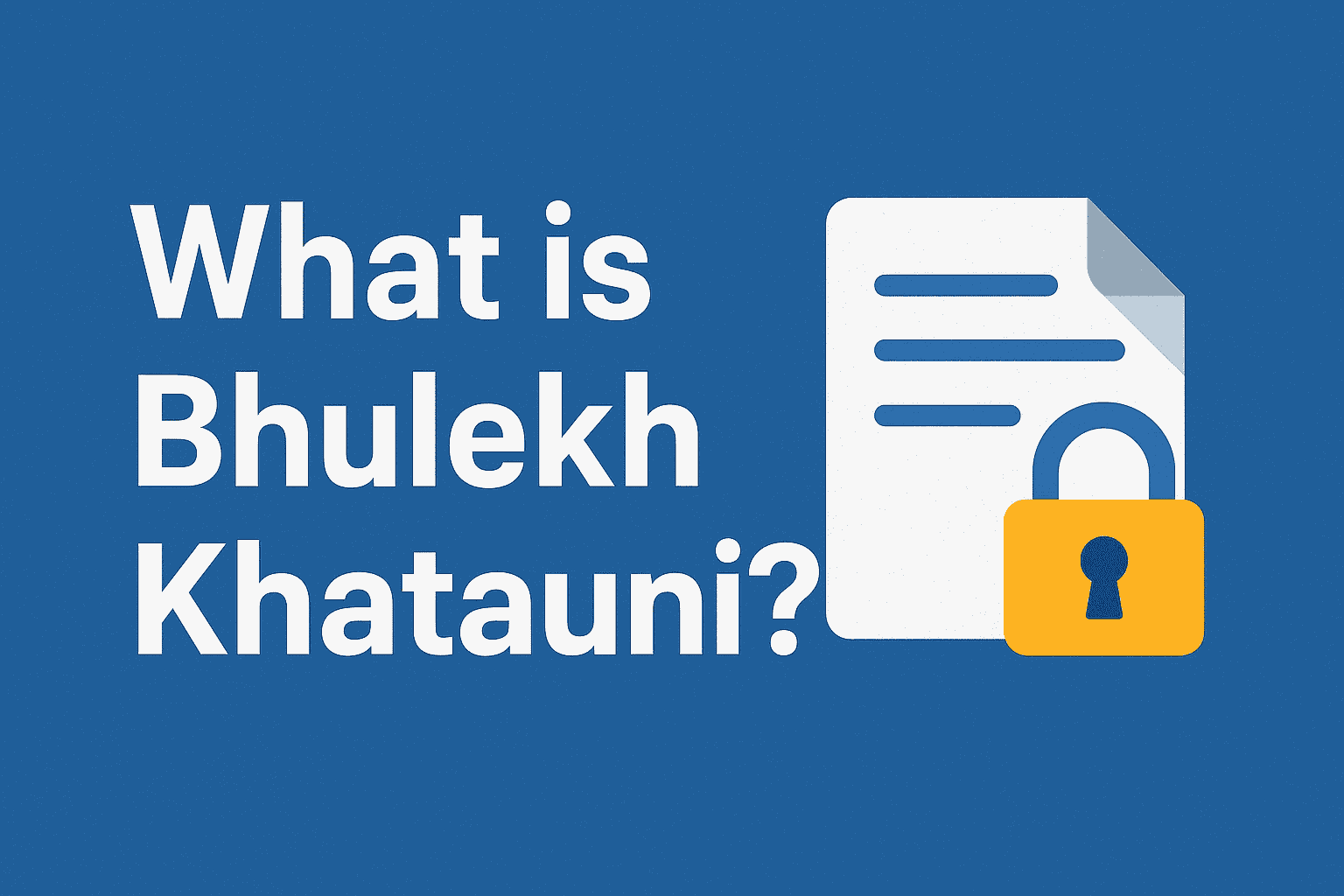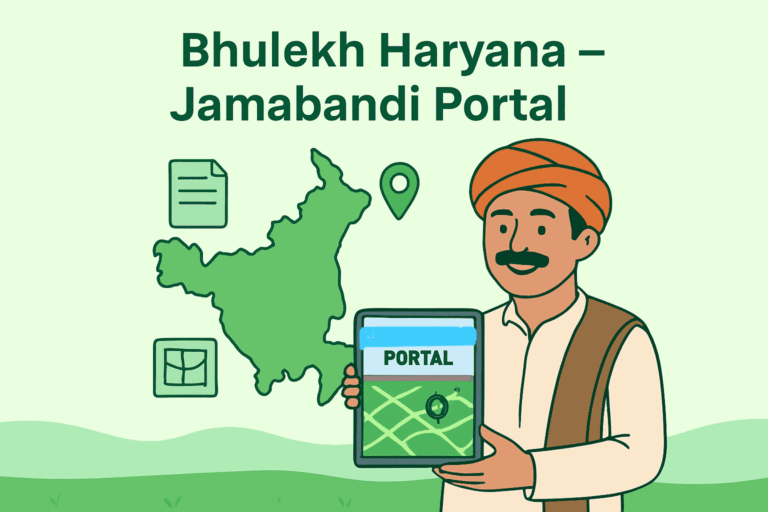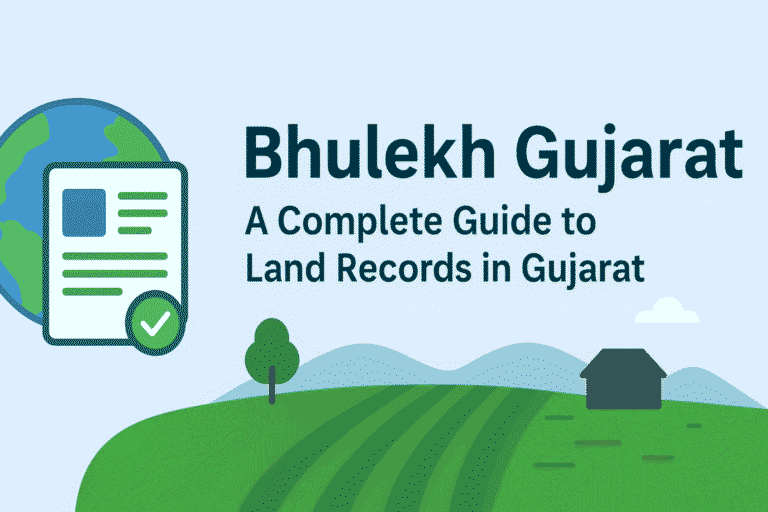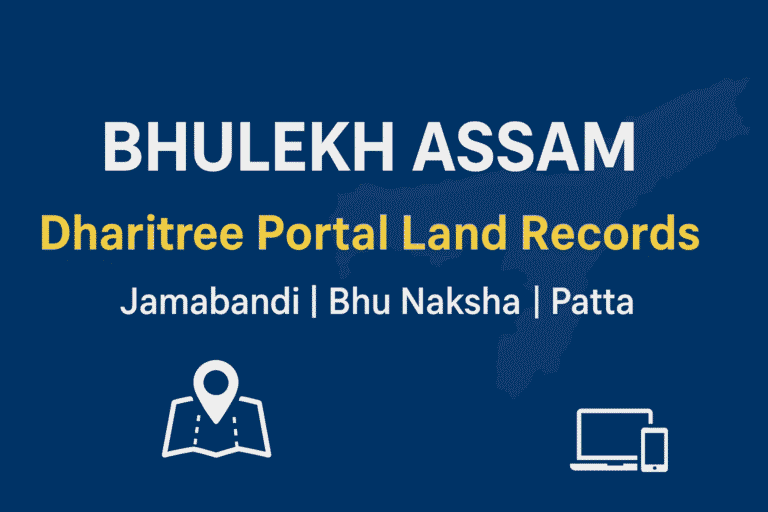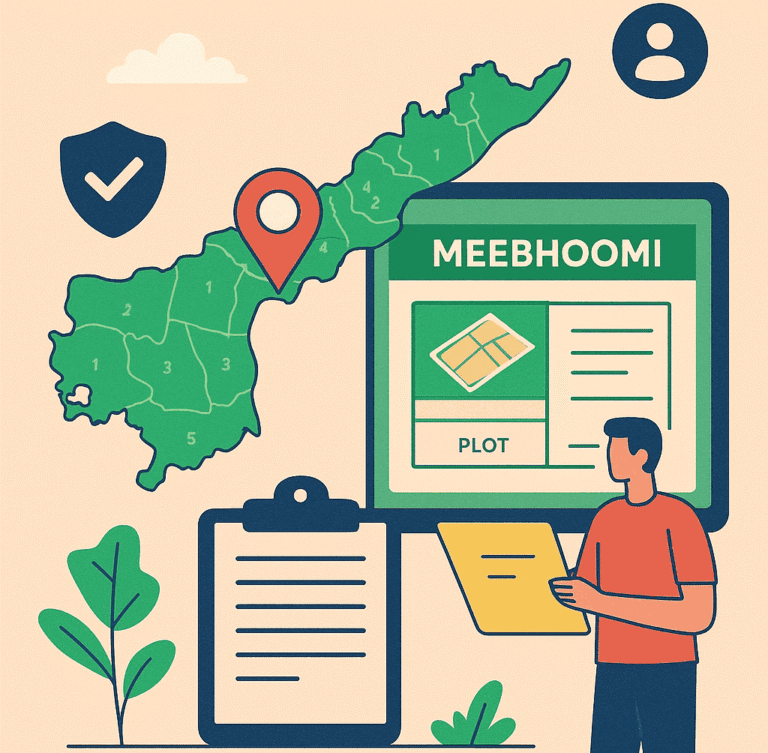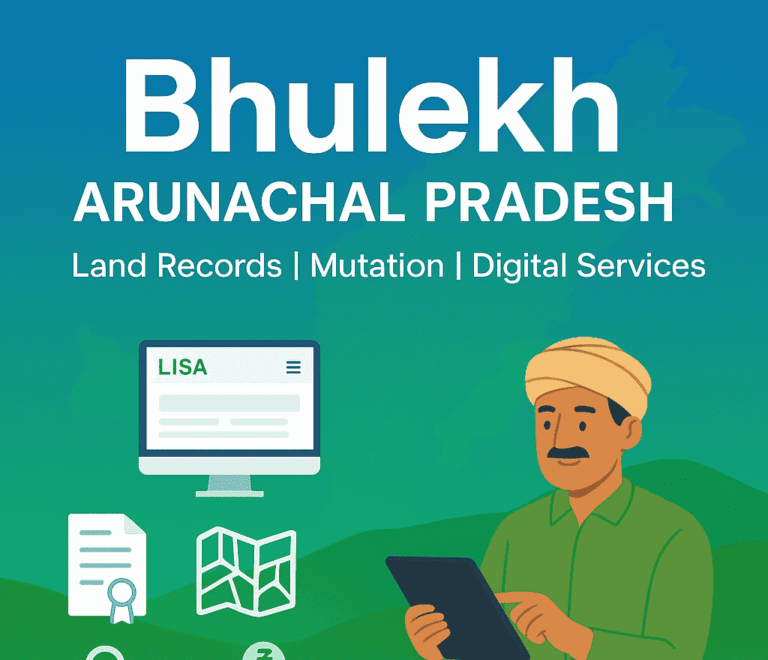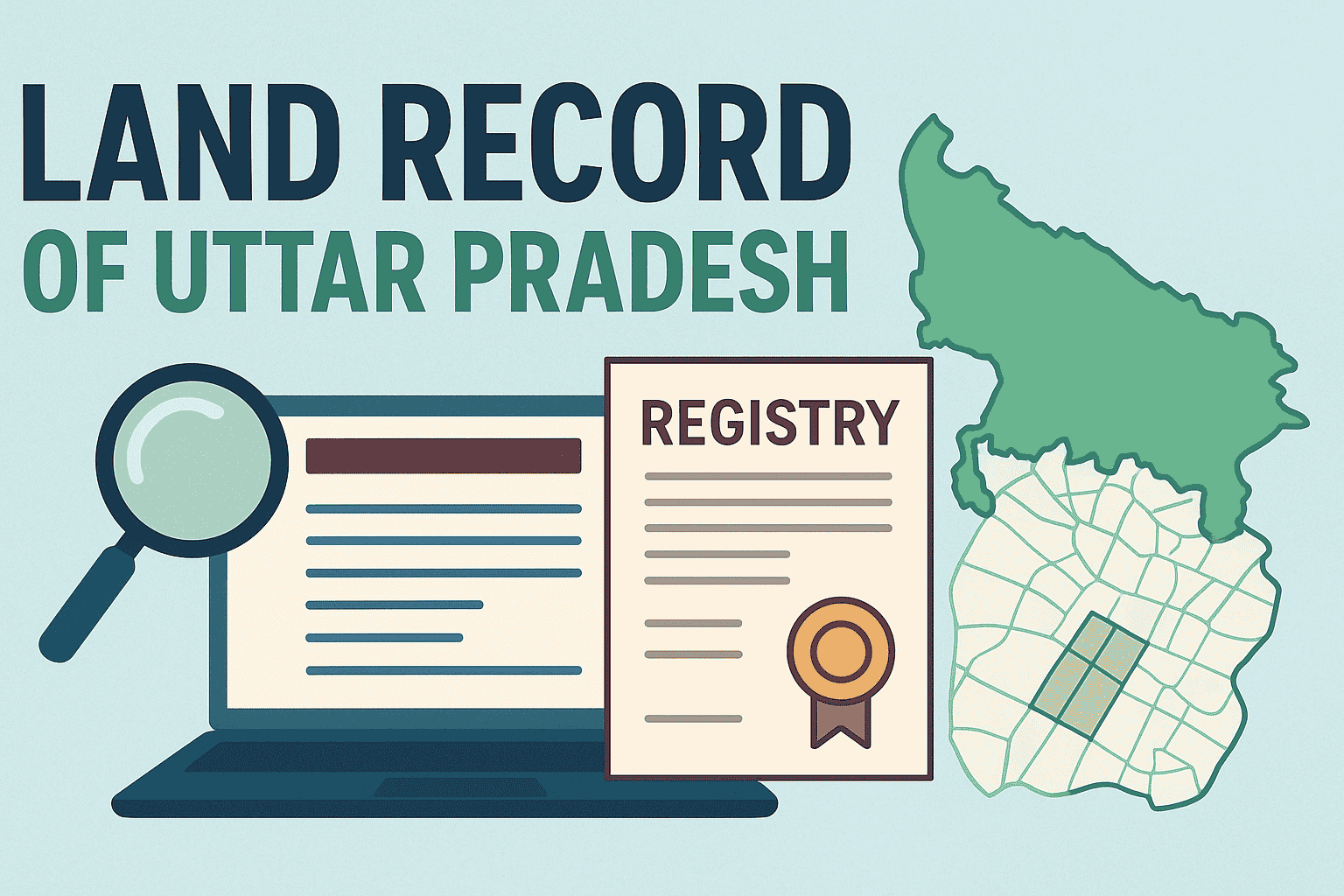What is Bhulekh Khatauni? Complete Guide to Land Records in India
Bhulekh Khatauni is an essential land record in India, especially for farmers, landowners, and property buyers. It acts as an official record of land holdings, helping to verify cultivation rights, manage property disputes, and provide transparency in land administration.
In this article, we will cover everything you need to know about Bhulekh Khatauni, its importance, how to access it online and legal significance.
What is Khatauni?
Khatauni (खतौनी) is a government-maintained register of land holdings that records the following details:
- Owner’s Name: Name of the individual or family owning or cultivating the land.
- Khasra Numbers: Unique survey numbers for each land parcel.
- Land Area: Size of each landholding.
- Cultivation Details: Crops grown on the land.
- Revenue Information: Land revenue assessments and payments.
⚠️ Note: Khatauni is a Record of Rights (RoR) and is not conclusive proof of ownership. Legal ownership requires documents such as sale deeds or title deeds.
Importance of Bhulekh Khatauni
Bhulekh Khatauni plays a critical role in land administration and property management:
- Legal Proof: Helps verify cultivation and possession rights.
- Dispute Resolution: Provides official records to resolve land disputes.
- Loan Applications: Banks may require Khatauni to sanction land loans.
- Taxation: Ensures accurate land revenue assessment.
- Inheritance and Transfer: Essential for property transfer and inheritance purposes.
How to Access Bhulekh Khatauni Online
Many Indian states have digitized their land records, making it easier for citizens to check their Khatauni online:
- Visit the Official State Portal: Examples:
- Uttar Pradesh: bhulekh.up.nic.in
- Gujarat: anyror.gujarat.gov.in
- Select District and Village: Narrow down your search to your specific land area.
- Enter Details: Input the owner’s name, Khatauni number, or Khasra number.
- View or Download: Check and download the Khatauni in PDF format for records.
💡 These online portals promote transparency and reduce the need for physical visits to government offices.
Khatauni vs Khasra: What’s the Difference?
| Feature | Khatauni | Khasra |
| Definition | Aggregated record of all landholdings of a person | Unique plot of land with a survey number |
| Purpose | Shows all lands owned or cultivated by a person | Identifies a specific plot of land |
| Content | Includes Khasra numbers, owner info, cultivation | Plot size, boundaries, and crops |
| Legal Use | Record of Rights, disputes, taxation | Detailed survey for land measurement |
In short, Khasra is individual land units, whereas Khatauni is a collection of Khasra details for an owner.
Legal Status of Khatauni
- Prima Facie Record: Khatauni is recognized as preliminary evidence of possession under the Indian Evidence Act.
- Not Conclusive Proof: Courts may require additional documents like sale deeds or mutation records to establish legal ownership.
- Usage in Disputes: Acts as supporting evidence in land disputes but must be corroborated with legal documents.
Conclusion
Bhulekh Khatauni is a crucial document for landowners, farmers, and property buyers in India. It ensures transparency in land administration, helps resolve disputes, and supports legal and financial processes.
While Khatauni provides vital details about landholding and cultivation, it is not a conclusive proof of ownership, so other legal documents like sale deeds and mutation records should also be considered for verification.
Accessing your Bhulekh Khatauni online is now easy through state-specific portals, bringing convenience and transparency to land record management.
Frequently Asked Questions
1. What is Bhulekh Khatauni?
Answer: Bhulekh Khatauni is an official register of landholdings in India that lists all plots owned or cultivated by a person or family.
2. What information is mentioned in a Khatauni?
Answer: Owner’s name, Khasra numbers, land area, crop details, and land revenue information.
3. Is Khatauni proof of ownership of land?
Answer: No, it is a record of rights and possession but not conclusive proof. Sale deeds and title deeds are required for legal ownership.
4. How is Khatauni different from Khasra?
Answer: Khasra is an individual land plot, while Khatauni aggregates all Khasras owned by a person.
5. How can I check my Khatauni online?
Answer: Visit your state’s Bhulekh portal, enter required details like owner name or Khatauni number, and view/download your record.
6. Which government portal provides Bhulekh Khatauni?
Answer: Each state has its portal. Examples: Uttar Pradesh (bhulekh.up.nic.in), Gujarat (anyror.gujarat.gov.in).
7. Can Khatauni be used for applying for a loan?
Answer: Yes, banks may require Khatauni as proof of cultivation and possession to sanction loans against land.
8. What are the uses of Khatauni in legal matters?
Answer: It helps resolve disputes, serves as preliminary evidence of possession, and assists in property transfers.
9. How can I correct errors in my Khatauni?
Answer: Visit the local land revenue office or submit an online request through the state Bhulekh portal for correction.
10. What documents are required to obtain Khatauni?
Answer: Owner ID proof, land survey details, and application form as per state guidelines.
11. Does every state in India have a Bhulekh Khatauni system?
Answer: Most states have digitized land records, though formats may vary.
12. Can I download Khatauni in PDF format from the portal?
Answer: Yes, most state portals allow PDF download for personal records.
13. What is the relationship between Khatauni and Record of Rights (RoR)?
Answer: Khatauni is part of RoR, which records landholding and cultivation rights.
14. How often is Khatauni updated by the government?
Answer: Updates depend on state regulations, usually after land transfers, cultivation changes, or annual revisions.
15. Who maintains and updates the Khatauni records?
Answer: State revenue departments maintain and update Khatauni under the supervision of local tehsildars or patwaris.
